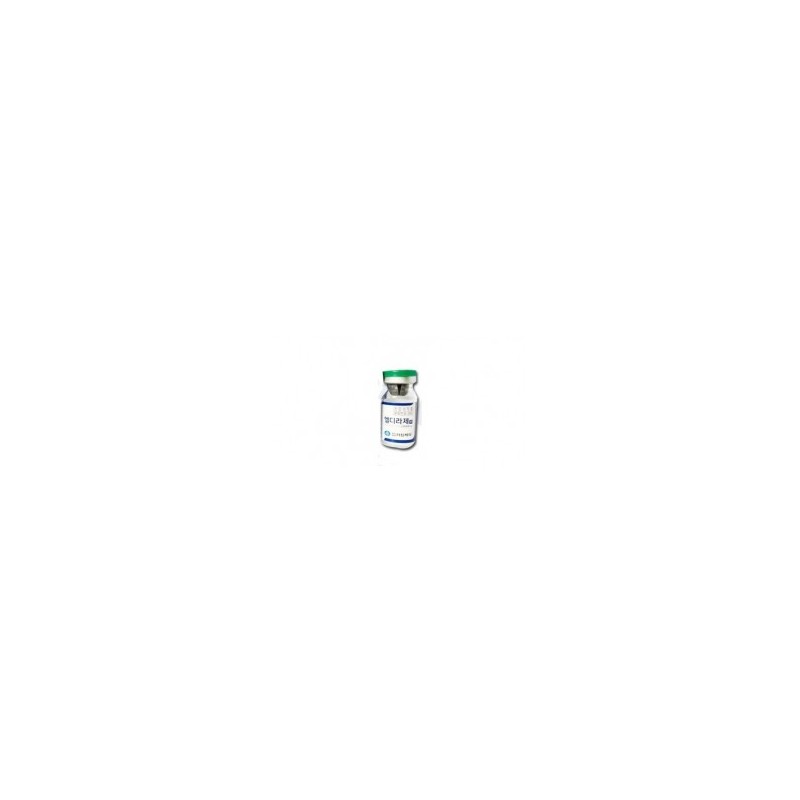



When we talk about hyaluronidase, we mean a preparation with a protein enzyme. The exact chemical structure of this enzyme is unknown. However, the product is strongly indicated to remove hyaluronic acid and granulomas caused by non-permanent dermal fillers. Sterile, preservative-free, colorless solution with a pH between 6.4 and 7.2. The bottle contains 1,500 IU. of hyaluronidase to be mixed with 1 ml of salt water. Valid alternative to Amphadase, Hylenex, Vitrase.
 International payments
International payments
We accept credit card payments and international wire transfers
 International shipments
International shipments
We ship to the US, UK, Europe and the rest of the world
 Return policy
Return policy
We guarantee the refund or replacement of damaged products
Hyaluronidase is a substance that spreads under the skin to improve the body's absorption of hyaluronic acid and other substances. It is also used to emphasize the elimination of radioactive substances in a system called subcutaneous urography. Hyaluronidase is also used to reduce any swelling after surgery.
In technical jargon, it is an enzyme with a temporary and reversible depolymerizing effect on the hyaluronic acid polysaccharide, naturally present in our connective tissue, in particular in the intercellular matrix. By acting in this way, this substance is able to degrade hyaluronic acid, favoring other treatments by means of injection aimed at solving problems related to beauty and health.
Usually these products are derived from animal tissues, so it is not always suitable for those with allergies or intolerances. Some products follow a purification process with a regular patent. By eliminating foreign DNA, foreign proteins and any viruses that can contaminate the product and damage the body are eliminated. Notwithstanding, that each product that has the approval of the competent health authorities is thoroughly checked to obtain it.
In addition to the uses already listed above, hyaluronidase is used to increase vascular and tissue permeability; to facilitate the diffusion of liquids in the tissues by reducing the swelling of some scars, for example. In addition, it facilitates joint movements by helping to reduce and prevent contractures.
In short, hyaluronhydrase is used for various pathologies and problems:
1. Remove unwanted hyaluronic acid fillers;
2. It increases the impact of the treatment with injections of PPC for the removal of fat, mixing it with other substances;
3. LLD treatment for fat removal.
The treatment for each specific pathology and problem will be prescribed and implemented by a qualified doctor specialized in the field of aesthetic medicine, who will easily find the injection points and decide how many cycles to implement.
It is administered by hypodermoclysis, usually a dose of 1500 I.U. of product diluted in 1 ml of normal physiological solution, to be injected before infusion or in the tube of the infusion set. It is recommended to be careful in case of fragile subjects such as children and the elderly, especially with regard to the speed and total volume of fluids to be administered. In case of kidney failure, avoid excessive hydration by injecting the products little by little. If the area is larger, as in the case of abdominal fat, 4 up to a maximum of 6 ampoules must be used. A specific treatment must be repeated at least once a week, 2 to 4 times. Beware that it must always be diluted with saline solution.
Subcutaneous or intramuscular injections: a dose of 1500 I.U. dissolved in the solution to be injected. In combo with local anesthetics: 1500 I.U. with the amount of anesthetic to be injected. For ophthalmic use, 15 I.U. per ml. To avoid extravasation: 1500 I.U. of hyaluronidase in 1 ml of water for injections or normal physiological solution, to be infiltrated as soon as possible in the affected area. For hematomas: 1500 I.U. dissolved in 1 ml of normal solution and infiltrate the affected area. In all cases: dissolve the lyophilized powder immediately before use, to avoid the loss of effectiveness of the product. Do not use for intravenous injections.
There may be contraindications for this drug, for example, a hypersensitivity to one or more components. It is also recommended not to use for any reason in case of insect bites or animal bites; tumors; infections; risk of premature birth. Complications can arise from the venom of the sting or the bite, as our body has its own natural immune reaction. In the case of childbirth, the anesthetic could cause permanent physical and neurological damage to the unborn child.
If used for ophthalmological treatment, do not apply directly on the cornea, but following the injection points suggested for the various therapies of the related pathologies. If the treatments are to be carried out by subcutaneous administration, it is advisable to use isotonic solutions with the presence of extracellular fluid, as the product is compatible with the main infusion fluids in common use.
There are no adverse reactions with other medicines, although administration during breastfeeding is not recommended as it could have side effects if it enters breast milk. However, to prevent it from harming the breastfed baby, it should be used with great caution. Absolutely not to be used during all stages of pregnancy. There are no known effects on the ability to drive and use machines. There could be a high probability of edema if this substance is combined with hypodermoclysis, equally if used with local anesthetics, the product can give rise to preorbital edema. Finally, the attending physician must be constantly updated on the clinical situation and other adverse side effects, especially in the event of an overdose.